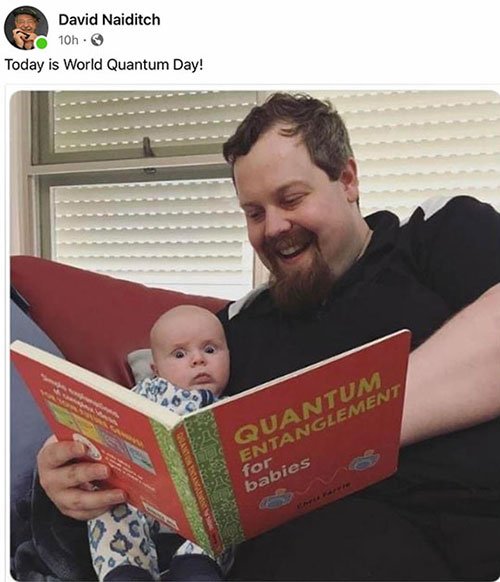Greetings from Palmia Observatory
Well last week we described some of the Blue Origin reusable rocket testing at their launch site near Van Horn, in west Texas and now want to consider visiting there too, but first let's remind everyone of the upcoming APS April Meeting.
So, we hope to see all of you physicist wannabes at the April APS Meeting from April 17 to April 20. There is a special session dealing with the muon g-2 measurement at Fermilab that might be the sign of new physics. Stay tuned and we will see you there!
 |
| American Physical Society (APS) April Meeting (Source: www.aps.org) |
We have been following activity at SpaceX Boca Chica facility for some time now and now after reporting on the recent success of the Blue Origin New Shepard launch success, our question was if we could visit both the Van Horn site and the SpaceX site in Boca Chica when we get back to Texas? Well, no, Texas is a big place and you can't really visit both sites at the same time. To drive between the two sites, be prepared for a 726 mile drive. The best way to go between both sites is probably to fly between Brownsville and El Paso.
 |
| iPad map screenshot for distance between Van Horn and Boca Chica (Source: Palmia Observatory) |
As the number of vaccinations keeps going up, it is getting harder to resist just flying down to Boca Chica to wait around and wait for the upcoming launch of Starship SN15. In other blog posts we considered where to stay and maybe have a good observing location at the same time. This hotel recommendation from @SpacPadreIsle looks very promising. Hotel rates at this time of year are about $125 per night mid week, with weekend rates about twice that.
 |
| Pearl Resort on South Padre Island (Source: Pearl Resort) |
The Pearl Resort is almost at the southern end of South Padre Island and about six miles from the Boca Chica launch site. Hmm, maybe playing in the sun and drinking margaritas could be a good time while we wait through the inevitable delays of getting SN15 to do its test hop!
 |
| iPad map of South Padre Island, Brownsville and Boca Chica (Source: Palmia Observatory) |
Ok, while we dream and plan about getting back to Boca Chica, we have to come back to our current pandemic reality and review some more of the science behind immunology. We get some information from the experts, but at the end of the day we have to perform our own risk assessment and decide what to do.
We have had many recent posts where we tried to review some of the basic physics and microbiology of viruses and vaccines and masks and risk assessment. This time, one of the central questions is about how safe those of us who are already vaccinated will be when we go travelling about. Fortunately, more and more people are getting vaccinated, so our risk of coming into contact with an infected person keeps going down. It is interesting to dig into the science a little bit to look into how our immune systems typically respond.
In this screenshot from Janeway's ImmunoBiology", 8th edition, by Kenneth Murphy, we see the course of a typical antibody response. This response must be similar to what happens to inoculated persons today when they encounter the virus. The immune system has already been primed and it remembers the antigen and can quickly generate many more antibodies to combat the pathogen.
You can see this effect in the diagram below for the case of two antigens, A and B. When the first antigen, A, is encountered, it takes several days to mount a defense. Then days later when the same antigen is encountered again, say from you coming into contact with an infectious person. the response this time is much faster because your adaptive immune system remembers the antigen and is ready to make large numbers of antibodies. But, notice how the presence of antigen, B, for the first time, still takes a longer time for the immune system to catch on and get a handle on it.
 |
| Typical Antibody Response (Source: K. Murphy, "Janeway's ImmunoBiology") |
This quick antibody response is why those of us who are inoculated against COVID-19, can quickly fend off the virus, even though there might be a short period of time where we too could be contagious until the immune system ramps up production of the antibodies.
There has been one other topic in the news and that is the use of monoclonal antibodies as a therapeutic to improve the outcome of patients already infected with the disease. These monoclonal antibodies are derived from previous patients that have been sick but now recovered and their antibodies, still in their system, can be isolated and cloned so that large quantities of antibodies can then be given to new patients. In the diagram below you see the mechanism of disease prevention is that the antibodies match up and adhere to the spike protein and thus prevent the virus from attaching and entering and infecting the cell.
 |
| What is a monoclonal antibody? (Source: JAMAnetwork) |
So where do all of these antibodies come from? For the treatment therapy outlined above, the antibodies are cloned from the memory cells generated in patients that have already survived the disease. This approach seems to be of value to patients who already have the disease, but monoclonal antibodies do not do much in terms of causing our immune system to generate a long lasting memory to protect the patient in the future. So it is not as effective as getting the vaccine.
In reviewing the science of immunology we have to go back to the beginning and ask where to the cells that make antibodies come from in the first place. In general terms, the complex number of specialized cells of the immune system all originate in the bone marrow. Look at this chart and see how the original stem cells in the bone marrow mature and differentiate into about a dozen specialized cells. This is all very complex.
 |
| Our immune response begins with cells from the bone marrow (Source: K. Murphy, "ImmunoBiology") |
One of the complexities of the system is how each of these specialized cells recognizes the antigens from the pathogens? It turns out there are complex molecules embedded in the cells membrane that can signal to other cells what type of antigen is present. In the screenshot below we see a giant molecular complex, called the MHC, can bring to the exterior surface, a protein derived from the antigen and present it and make it available to other specialized cells. These other cells, depending on their function will recognized the presented antigen, which then triggers some other complex chain of events that make up the immune system.
 |
| Recognition of antigens involves complicated signaling systems (Source: K. Murphy, "ImmunoBiology") |
So we see right away that our immune system is a very complicated system. It relies on first of all the innate response to pathogens and then the more specific and adaptive immune system that relies on memory of a specific pathogen in the past. So how is memory of past pathogens implemented in the immune system and how does all of the complexity of generating the thousand thousands of possible matches to the possible antigens. The details of how cells are able to sense what other proteins are present and then generate some signaling to other cells or systems is just amazing and complicated. The ImmunoBiology textbook goes into those details but for now it is way beyond the effort that I want to expend.
But let's bring the discussion back to the area of astrobiology. It seems like the finding how the first life arose on a planet is hard enough,, but we are faced with another issue right away too and that is the evolution of the immune system. Is it the case that with the arrival of the first life forms that other life forms, like pathogens, were arriving also to take advantage of a tasty meal.
One reference paper on the evolution of the immune system is identified below. It seems that the immune system in mammals arose about 500 million years ago in jawed fish. So does that mean that before that time there was no immune system or maybe just an innate immune system without the benefits of our current adaptive immune systems? At any rate it seems the astrobiological concerns of looking for life on exoplanets need be concerned about the complicated immune system at the same time as looking for the origin of life which apparently existed a couple of billion years before the development of the adaptive immune system. I haven't made my way through the whole NIH paper yet, but if you are interested you can look up the paper and check it out for yourselves.
 |
| Evolution of immune systems in mammals goes back 500 million years (Source: Flajnik & Kasahra) |
Ok, that is enough of an introductory review of microbiology for now. Finally, for all you quantum field theory wannabes, who have struggled learning the topic, we just learned that there is a new series of books available to help smooth your study of the field. We have tried books with "student friendly" in the title or even "for the gifted amateur", but they still seem too difficult for the typical wannabe, or maybe just this wannabe. But our friend David posted what looks like a joke, but in reality also contains a real book. You can actually get the book on Amazon if you choose (or dare)!
 |
| Maybe "for babies" is easier than "student friendly" books (Source: D. Naiditch's Facebook) |
Until next time, here from our burrow, stay safe, as we recover more of our freedom,

No comments:
Post a Comment